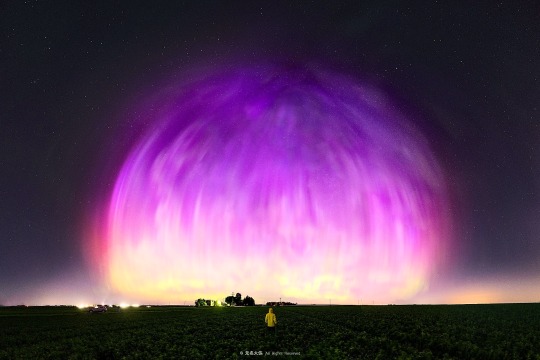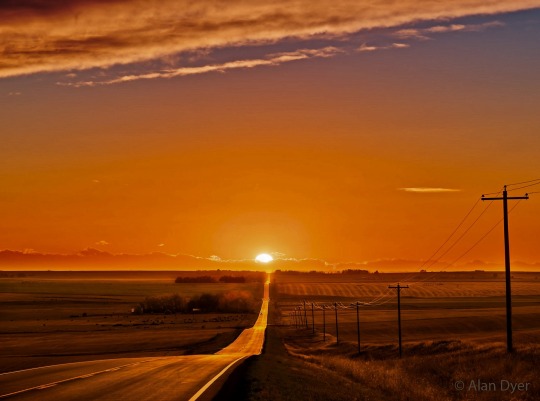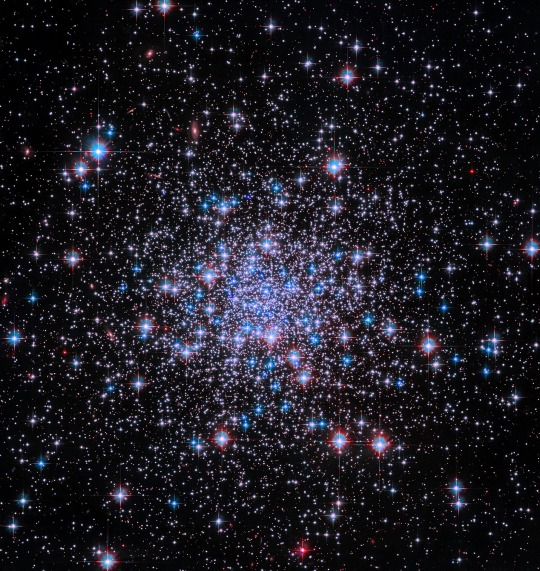"Astronomy compels the soul to look upwards and leads us from this world to another" -Plato
Don't wanna be here? Send us removal request.
Text


A lunar eclipse…from both sides!!
On March 13-14, 2025, the Earth passed directly between the Sun and the Moon. Earth cast its shadow, turning the Moon's typically gray and cratered surface red, aka a "Blood Moon."
While NASA’s Glenn Research Center was looking up to see the Blood Moon Eclipse last night, Firefly Aerospace’s Blue Ghost lunar lander was looking back at us!
Perspective is everything….
Image Credit & Copyright:
- image 1: Credit: NASA/Sara Lowthian-Hanna
- image 2: Credit: Firefly Aerospace
#astronomy#space#science#universe#blood moon#blood moon eclipse#lunar eclipse#eclipse#lunar#moon#earth#sun#follow#like#reblog#the first star#the first starr#thefirststar#thefirststarr#nasa#apod#Tumblr#blog#space blog
1K notes
·
View notes
Text

Ever wonder how stars and planets form? New clues have been found in the protoplanetary system Herbig-Haro 30 by the James Webb Space Telescope, Hubble and the Earth-bound telescope ALMA. The observations show, that large dust grains are more concentrated into a central disk where they can form planets. The featured image from Webb shows many attributes of the HH-30 system. Jets of particles are being expelled vertically, shown in red, while a dark dust-rich disk is seen across the center, blocking the light from the star or stars still forming there. Blue-reflecting dust is seen in an arc above and below the central disk, although why a tail appears on the lower left is currently unknown. Studying how planets form in HH 30 can help astronomers better understand how planets in our own Solar System once formed, including the Earth.
Image Credit & Copyright: James Webb Space Telescope, ESA, NASA & CSA, R. Tazaki et al.
#astronomy#space#science#universe#planets#planetary system#planetary#systems#new planets#planet formation#Hubble#James Webb#telescopes#hubble space telescope#james webb space telescope#earth#follow#like#reblog#the first star#the first starr#thefirststar#thefirststarr#nasa#apod#Tumblr#blog#space blog
108 notes
·
View notes
Text

This is the largest photomosaic ever assembled from Hubble Space Telescope image data. It is a panoramic view of our neighboring spiral Andromeda Galaxy. It consists of 600 overlapping frames assembled from observations made from July 2010 to December 2022. A cropped version of the mosaic, which is shown above, partially covers Andromeda's core and inner spiral arms. Also known as M31, the Andromeda Galaxy is 2.5 million light-years away, making it the closest large spiral galaxy to our own. Hubble's comprehensive, detailed data set extending across the Andromeda Galaxy will allow astronomers to make an unprecedented exploration of the mysteries of spiral galaxy structure and evolution.
Image Credit & Copyright: NASA, ESA, Hubble Mission, B. F. Williams (Univ Washington), Z. Chen (Univ Washington), L. C. Johnson (Northwestern), Processing; Joseph DePasquale (STScI), Hubble Space Telescope
#astronomy#space#science#universe#galaxy#andromeda#andromeda galaxy#Hubble#hubble space telescope#mosaic#light year#follow#like#reblog#the first star#the first starr#thefirststar#thefirststarr#nasa#apod#Tumblr#blog#space blog#colours#colors#pretty#stars#star
131 notes
·
View notes
Text





HAPPY VALENTINE’S DAY!!!! I’m BACK and what better day to come back than with my annual Valentine’s Day post.
Love you all & hope today was the happiest love day- love day with others or even just yourself. You deserve to love yourself too 🫶🏻
🩷❤️🧡💛💚🩵💙💜🤍🤎🩶🖤💝
#astronomy#space#science#universe#Valentine’s Day#Valentine’s Day cards#Valentine’s Day memes#valentine#valentine cards#cards#funny#lol#follow#like#reblog#the first star#the first starr#thefirststarr#thefirststar#nasa#apod#Tumblr#space blog#ily#I’m back
47 notes
·
View notes
Text

What's that black spot on Jupiter? No one is really sure. During a pass of NASA's Juno over Jupiter, the robotic spacecraft imaged a usually dark cloud feature, nicknamed the Abyss. Surrounding cloud patterns show the Abyss to be at the center of a vortex. Since dark features on Jupiter's atmosphere tend to run deeper than lighter features, the Abyss may really be the deep hole that it appears -- but without more evidence that remains unclear. The Abyss is surrounded by a complex of clouds and other swirling storm systems, some of which are topped by light colored, high-altitude clouds. The featured image was captured in 2019 while Juno passed only about 15,000 kilometers above Jupiter's cloud tops. The next close pass of Juno near Jupiter will be in about three weeks.
Image Credit & Copyright: NASA, Juno, SwRI, MSSS; Processing & License: Gerald Eichstädt & Sean Doran
#astronomy#space#science#universe#jupiter#planet#dark spot#abyss#juno#juno spacecraft#jupiter juno#clouds#layers#follow#like#reblog#the first star#the first starr#thefirststar#thefirststarr#nasa#apod#Tumblr#blog#space blogger
226 notes
·
View notes
Text

By starlight, this eerie face shines in the dark with a crooked profile giving it its popular name, the Witch Head Nebula. In fact, this telescopic portrait gives the impression that a witch has fixed her gaze on Orion's bright supergiant star Rigel. More formally known as IC 2118, the Witch Head Nebula spans about 50 light-years and is composed of interstellar dust that reflects Rigel's starlight. The color of the Witch Head Nebula is caused not only by the stars intense blue light, but because the dust scatters blue light more efficiently than red. The same physical process causes Earth's daytime sky to appear blue. Rigel and this dusty cosmic crone are about 800 light-years away.
Hope everyone had a safe & fun Halloween! 👻🧡🖤💛
Image Credit & Copyright: Simone Curzi
#astronomy#space#science#universe#witch head#witch#witch nebula#witch head nebula#Halloween#Halloween 2024#Orion#Orion belt#supergiant star#dust#light scatter#follow#like#reblog#the first star#the first starr#thefirststar#thefirststarr#nasa#apod#Tumblr#blog#blogger#space blog#Halloween science
123 notes
·
View notes
Text

Blown by fast winds from a hot, massive star, this cosmic bubble is huge. SH2-308, also known as The Dolphin-head Nebula, is cataloged as Sharpless 2-308 and lies 5,000 light-years away toward the constellation Canis Major and covers a diameter of 60 light-years at its estimated distance. The massive star that created the bubble, a Wolf-Rayet star, is the bright one near the center of the nebula. Wolf-Rayet stars have over 20 times the mass of the Sun and are thought to be in a brief, pre-supernova phase of massive star evolution. Fast winds from this Wolf-Rayet star create the bubble-shaped nebula as they sweep up slower moving material from an earlier phase of evolution. The windblown nebula has an age of about 70,000 years. Relatively faint emission captured by narrowband filters in the deep image is dominated by the glow of ionized oxygen atoms mapped to a blue hue.
Image Credit & Copyright: Prabhu Kutti
#astronomy#space#science#universe#nebula#bubble#dolphin head#dolphin#head#canis major#constellation#supernova#moon#diameter#light years#far#stars#follow#like#reblog#the first star#the first starr#thefirststar#thefirststarr#nasa#apod#tumblr#blog#space blog#colourful
169 notes
·
View notes
Text

Sometimes, massive stars can blow bubbles. This image shows perhaps the most famous star-bubbles of all, NGC 7635, also known simply as The Bubble Nebula. Although it looks delicate, the 7-light-year diameter bubble offers evidence of violent processes at work. To the top left of the Bubble's center is a hot, O-type star, several hundred thousand times more luminous and 45-times more massive than the Sun. A fierce stellar wind and intense radiation from that star has blasted out the structure of glowing gas in a surrounding molecular cloud. The intriguing Bubble Nebula and associated cloud complex lie 7,100 light-years away toward the boastful constellation Cassiopeia. This sharp, tantalizing view of the cosmic bubble is a reprocessed composite of previously acquired Hubble Space Telescope image data.
Image Credit & Copyright: NASA/ESA/HUBBLE SPACE TELESCOPE
#astronomy#space#science#universe#nebula#bubble#Hubble#Hubble bubble#bubble nebula#light years#far#gas#giant star#star#radiation#Cassiopeia#constellation#follow#like#reblog#the first star#the first starr#thefirststar#thefirststarr#nasa#apod#tumblr#blog#space blog#space blogger
215 notes
·
View notes
Text

What powers the Crab Nebula? A city-sized magnetized neutron star spinning around 30 times a second. Known as the Crab Pulsar, it is the bright spot in the center of the nebula's core. About 10 light-years across, the spectacular picture of the Crab Nebula (M1) frames a swirling central disk and complex filaments of surrounding and expanding glowing gas. The picture combines visible light from the Hubble Space Telescope in red and blue with X-ray light from the Chandra X-ray Observatory shown in white, and X-ray emission detected by Imaging X-ray Polarimetry Explorer (IXPE) in purple. The central pulsar powers the Crab Nebula's emission and expansion by slightly slowing its spin rate, which drives out a wind of energetic electrons.
Image Copyright & Credit: NASA, ESA, ASI, Hubble, Chandra, IXPE
#astronomy#space#science#universe#crab#nebula#Crab Nebula#pulsar#neutron star#star#neutron#xray#visible light#xray light#light year#Chandra#follow#like#reblog#the first star#the first starr#thefirststar#thefirststarr#nasa#apod#tumblr#pretty#beautiful#blog#space blog
181 notes
·
View notes
Text

Why are these clouds multi-coloured? A relatively rare phenomenon in clouds known as iridescence can bring up unusual colours, or even a whole spectrum of colours simultaneously. These polar stratospheric clouds also, known as mother-of-pearl clouds, are formed of small water droplets of nearly uniform size. When the Sun is in the right position and, typically, hidden from direct view, these thin clouds can be seen significantly diffracting sunlight in a nearly coherent manner, with different colours being deflected by different amounts. Therefore, different colours will come to the observer from slightly different directions. Many clouds start with uniform regions that could show iridescence but quickly become too thick, too mixed, or too far from the Sun to exhibit striking colours. The featured image and an accompanying video were taken late in 2019 over Ostersund, Sweden.
Image Copyright: Image Credit: Goran Strand
#astronomy#space#science#universe#clouds#Sweden#colours#color#iridescence#iridescent clouds#colourful#sunlight#refraction#follow#like#reblog#the first star#the first starr#thefirststar#thefirststarr#nasa#apod#tumblr#space blog#pretty#dashboard#space Tumblr#tumblr space#bold#colour
293 notes
·
View notes
Text
youtube
Comparing how fast the planets spin, and their tilts!!
Credit: Dr. James O'Donoghue
#astronomy#space#science#universe#video#planets#solar system#tilt#speed#rotation#mercury#Venus#earth#mars#jupiter#Saturn#Uranus#Neptune#Pluto#follow#like#reblog#the first star#the first starr#thefirststar#thefirststarr#nasa#apod#Youtube
51 notes
·
View notes
Text

Part of the sky glowed purple! It was the now famous night of May 10, 2024, when people over much of the world reported beautiful aurora-filled skies. The featured image was captured this night during early morning hours from Arlington, Wisconsin, USA. The panorama is a composite of several 6-second exposures of the visible sky, with north in the center, and processed to heighten the colors and remove electrical wires. The photographer (in the foreground) reported that the aurora appeared to flow from a point overhead but illuminated the sky only toward the north. The aurora's energetic particles originated from CMEs ejected from our Sun over sunspot AR 6443 a few days before.
Image Credit & Copyright: Xuecheng Liu & Yuxuan Liu
#astronomy#space#science#universe#aurora borealis#aurora#borealis#northern lights#lights#northern#electromagnetic storm#geostorm#purple#may 10 2024#follow#like#reblog#the first star#the first starr#thefirststar#thefirststarr#nasa#apod#tumblr#blog#space blog
113 notes
·
View notes
Text

The total solar eclipse seen in Dallas, Texas on Monday, April 8, 2024!! A total solar eclipse swept across a narrow portion of the North American continent from Mexico’s Pacific coast to the Atlantic coast of Newfoundland, Canada. A partial solar eclipse was visible across the entire North American continent along with parts of Central America and Europe.
Was anyone able to see it?
Image Credit & Copyright: NASA/Keegan Barber
#astronomy#space#science#universe#total solar eclipse#solar eclipse#eclipse#solar#sun#moon#Canada#Mexico#USA#partial eclipse#solar eclipse 2024#follow#like#reblog#the first star#the first starr#thefirststar#thefirststarr#nasa#apod#tumblr#blog
137 notes
·
View notes
Text

What's that at the end of the road? The Sun. Many towns have roads that run east-west, and on two days each year, the Sun rises and sets right down the middle. Yesterday, in some parts of the world (today in others), is one of those days: an equinox. Not only is this a day of equal night and day time, but also a day when the sun rises precisely to the east and sets due west. Displayed here is a picturesque rural road in Alberta, Canada that runs approximately east-west. The featured image was taken during the September Equinox of 2021, but the geometry remains the same every year. In many cultures, this March equinox is taken to be the first day of a season, typically spring in Earth's northern hemisphere, and autumn in the south.
Image Credit & Copyright: Alan Dyer, Amazingsky.com, TWAN
#astronomy#space#science#universe#equinox#vernal equinox#spring#first day of spring#spring equinox#sun#east#west#sun set#Sun rise#sunset#sunrise#follow#like#reblog#the first star#the first starr#thefirststar#thefirststarr#nasa#apod#hemisphere#seasons#autumn#autum equinox#autumnal equinox
120 notes
·
View notes
Text

There's some science to February's bonus day!!
Every four years, during a leap year, the imperfect match between the length of a calendar year and Earth's orbit result in a calendar adjustment known as a leap day.
The length of a year is based on how long it takes a planet to revolve around the Sun. Earth takes about 365.2422 days to make one revolution around the Sun. That's about six hours longer than the 365 days that we typically include in a calendar year. As a result, every four years we have about 24 extra hours that we add to the calendar at the end of February in the form of leap day.
Without leap day, the dates of annual events, such as equinoxes and solstices, would slowly shift to later in the year, changing the dates of each season. After only a century without leap day, summer wouldn't start until mid-July!
Image Credit & Copyright: NASA/TERRA-MODIS
#astronomy#space#science#universe#leap day#leap year#february#February 29#earth#planet#sun#revolution#revolve#year#calendar#cloud#land#water#follow#like#reblog#the first star#the first starr#thefirststar#thefirststarr#nasa#apod#tumblr#blog#space blog
119 notes
·
View notes
Text

This new NASA Hubble Space Telescope view shows the globular cluster NGC 2298, a sparkling collection of thousands of stars held together by their mutual gravitational attraction. Globular clusters are typically home to populations of older stars, and they mostly reside in the dusty outskirts of galaxies. Scientists utilized the telescope’s unique ability to observe the cosmos across multiple wavelengths of light to study NGC 2298 in ultraviolet, visible, and near-infrared light. This valuable information helps astronomers better understand how globular clusters behave, including their internal movements, orbits, and the evolution of their stars.
Image Credit & Copyright: NASA, ESA, G. Piotto (Universita degli Studi di Padova), and A. Sarajedini (Florida Atlantic University);
#astronomy#space#science#universe#globular cluster#star cluster#cluster#globular#star#Hubble#hubble space telescope#telescope#blue stars#old stars#study#follow#like#reblog#the first star#the first starr#thefirststar#thefirststarr#nasa#apod#tumblr#blog#space blog#hst#galaxy#gravity
193 notes
·
View notes
Text

It’s oh-so-easy to be mesmerized by this spiral galaxy known as NGC 4254. Follow its clearly defined arms, which are brimming with stars, to its center, where there may be old star clusters and, sometimes, active supermassive black holes. NASA’s James Webb Space Telescope delivered highly detailed scenes of this spiral galaxy in a combination of near- and mid-infrared light.
Image Credit & Copyright: NASA, ESA, CSA, STScI, Janice Lee (STScI), Thomas Williams (Oxford), and the PHANGS team
#astronomy#space#science#universe#galaxy#spiral galaxy#spiral#stars#hot stars#young stars#supermassive black hole#black hole#supermassive#James Webb#james webb space telescope#jwst#star clusters#star#cluster#star cluster#follow#like#reblog#the first star#the first starr#thefirststar#thefirststarr#nasa#apod#tumblr
200 notes
·
View notes